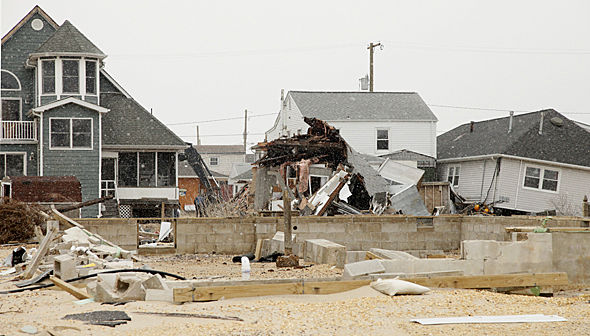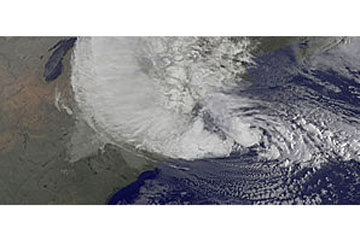
'Sandy' Retired from Hurricane Name List

As expected, the name "Sandy" has been retired from the official list of names for hurricanes and tropical storms in the Atlantic Ocean basin, the National Oceanic and Atmospheric Administration (NOAA) announced today (April 11).
The list of hurricane names for the Atlantic basin (which includes the Caribbean and Gulf of Mexico) is maintained by the World Meteorological Organization; there are lists going out six years in the future, with each list reused every six years. But when a hurricane or tropical storm causes considerable damage or loss of life, and the re-use of the name of the storm would be considered insensitive to its victims, the WMO can strike the name from the list.

Sandy is the 77th Atlantic storm name to be retired since 1954, NOAA's National Hurricane Center (NHC) said in a statement. Sandy will be replaced by the name "Sara" when the list is used again in 2018.
When Hurricane Sandy approached the U.S. Northeast, it was a huge storm with a large footprint that caused significant storm surge along the coast. That surge, along with Sandy's winds, caused nearly $50 billion in damage in the region, making it the second costliest storm in U.S. history after Hurricane Katrina.
Sandy also caused significant destruction in the Caribbean, where it first formed.
Some 147 deaths could be directly attributed to Sandy across the Atlantic basin, the NHC said. Seventy-two of these deaths occurred in the Mid-Atlantic and Northeast regions of the United States, the greatest number of fatalities from a tropical cyclone outside of the Southern states since Hurricane Agnes in 1972, according to the NHC statement.
Other recently retired hurricane names include: Irene (2012), Charley (2004), Dennis (2005), Dean (2007), Fabian (2003), Frances (2004), Felix (2007), Gustav (2008), Iris (2001), Isidore (2002), Isabel (2003), Ivan (2004), Ike (2008), Igor (2010), Juan (2003), Jeanne (2004), Katrina (2005), Lili (2002), Michelle (2001), Noel (2007), Paloma (2008), Rita (2005), Stan (2005), Tomas (2010) and Wilma (2005).
Sign up for the Live Science daily newsletter now
Get the world’s most fascinating discoveries delivered straight to your inbox.
Follow Andrea Thompson @AndreaTOAP, Pinterest and Google+. Follow OurAmazingPlanet @OAPlanet, Facebook and Google+.Original article at LiveScience's OurAmazingPlanet.

Andrea Thompson is an associate editor at Scientific American, where she covers sustainability, energy and the environment. Prior to that, she was a senior writer covering climate science at Climate Central and a reporter and editor at Live Science, where she primarily covered Earth science and the environment. She holds a graduate degree in science health and environmental reporting from New York University, as well as a bachelor of science and and masters of science in atmospheric chemistry from the Georgia Institute of Technology.









